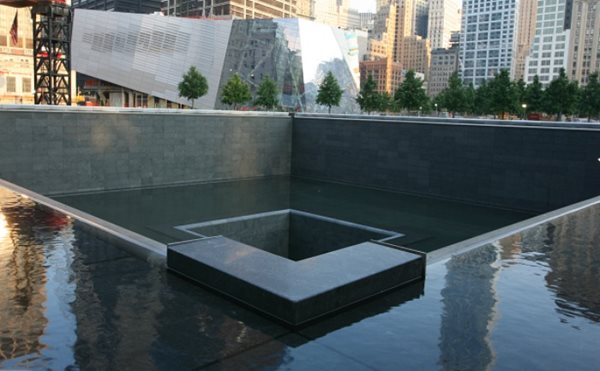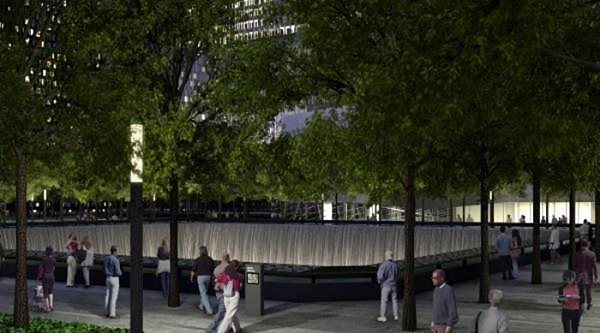9/11 Memorial
The 9/11 Memorial opens this Sunday to the public, on the tenth anniversary of the attacks. We take a look at the landscape architecture, designed by Peter Walker, in conjunction with the project's architect, Michael Arad.

On Sunday, September 11, 2011, the 9/11 Memorial will be dedicated and become open to the public, coinciding with the tenth anniversary of the attacks. Michael Arad, the architect of the Memorial, worked with the landscape architecture firm Peter Walker and Partners to design the landscape.
Four hundred and twenty two swamp white oaks (Quercus bicolor) were planted at the site, and all of the trees were harvested from within a 500-mile radius of the World Trade Center site, with additional trees coming from area in Pennsylvania and near Washington, D.C., the two other regions that were impacted by the attacks on September 11, 2001.

The architects said that they chose the swamp white oaks "because of their durability and leaf color. In fall, the leaf color ranges from amber to golden brown—and sometimes pink." They also added a more poetic reason for choosing the trees, saying "The trees will never be identical, growing at different heights and changing leaves at different times, a physical reminder that they are living individuals."
The trees were cared for in New Jersey, where for three years, where, as Walker told the San Francisco Chronicle, "We gorged the small ones and starved the big ones," in order to even out their size.

The plaza's many trees also serve as a green roof for the Memorial Museum and the subway station that 70 feet below. In order to provide adequate support for the trees, a suspended paving system was created, with pavement layered on top of troughs filled with soil. Each of troughs—18-foot-wide bands of soil—are adjacent to tunnels that allow workers to reach pipes and utility lines.
RELATED:
9/11 Memorial in Connecticut

The New York Times has an interesting article about the challenges that Michael Arad, the architect, faced over the past decade. One of the biggest changes that was made to his design was that the many names that make up the memorial were originally designed to be below ground, with the waterfalls in the background, were, because of security and cost concerns, elevated to ground level.

Each of the reflecting pools stands in a footprint of the original World Trade Center towers, and each are nearly an acre in size and will be bordered by the largest man-made waterfalls in North America.
The bronze panels that edge the pool are etched with the names of every person who died on September 11, 2001, as well as those who were killed in the attacks in 1993. The 2,983 names on the panels were arranged using a careful and complex algorithm that reflect the social and professional bonds between those who died. Scientifc American takes a look at how this emotional equation had to be programmed, a tricky process that ended up as a collaboration between software artist Jer Thorp and media design firm Local Projects.

As a result of the ongoing construction on the other World Trade Center projects, visitors to the memorial need to sign up through a timed reservation system. The easiest way to make a reservation is online.
Click here to access the Memorial reservation system.
If you are a family member related to one of the 2,983 individuals listed on the Memorial, please click here.
Visit the Before You Arrive page to learn more information that will help you plan your visit to the 9/11 Memorial.
For groups of 10 or more, visit the Group information page or call (212) 266-5200.
The online reservations system is the most efficient and expeditious way to book a 9/11 Memorial visitor pass. However, if you need reservation assistance for any reason, please call (212) 266-5200.
